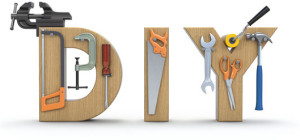“Information should be structured in the same way as a building is structured,” said Richard Saul Wurman. In this day and age, information is everything.
Life has become unimaginable without it. From work to entertainment, everything is information. Hence it is very important to structure and process it based on whom it is addressed. No matter what the relevance and quantity of information on a UI, the design always plays a powerful role.
In fact, Gary Wolf once remarked “presenting information often outweighs the information itself.”
It is very important that a web or app developer, regardless of the nature of the project, should structure the information in such a way that it forms the very basis of a successful UX design. After all, good data structuring guarantees good user navigation.
The process of structuring is called “Information Architecture”. Like a good content that engages a reader until the end, well-structured information guarantees smooth navigation for users.

These two when combined, creates a synergy, thus fetching in more conversions. The designing part should be emphasized as much as the content section. There are many ways of arranging the information on an interface, most notably Hierarchical, Sequential and Matrix.
Hierarchical
This method is based on the Gestalt school of thought, which states that the human mind tends to perceive things as integral parts of a greater whole. It also postulates that every part when combined can never equal the whole. The same thing when applied on a user interface, becomes Hierarchical Information Architecture.
Also termed as Visual Hierarchy, it allows the user to distinguish each information based on its importance in relation to other information, whereas the mind differentiates the physical characteristics based on color, contrast, etc.
It is the most widely used information architecture in the market. You get to see this pattern in most of the websites in sections like products, services, etc.
Sequential
It is a sort of unidirectional path usually found in payment, retail and e-commerce websites/apps. The user goes through every step in a linear way to accomplish a certain task.
Matrix Technique
This you can say is a customized method built specifically for user’s choice. By choice, we mean the user’s freedom in determining the navigation technique. Here, the user has the freedom to search for the desired content in the interface.
Navigating through a vast pool of content is often exhaustive. Users rather prefer to search for the desired content in such cases.
Also, there are certain minor sub-techniques that you can employ:
- Alphabetical Schemes: Used to arrange the content in alphabetical order
- Chronological Schemes: Used to arrange by date
- Topic Schemes: Used to arrange by specific topics
Labeling Technique
Labeling is used when a website has a lot of information at the store. The user can search for the desired content as mentioned above, but what if we could make it more convenient by providing labels that would brief the entire content in one word?
Enters labeling technique, it briefs a wide network of content in one word and is positioned in a particular section of the website. For example Contact section. The website has many contact facilities including, e-mail, phone, social media; but might not have enough space on the home page to display all of it. In such cases, designers use this labeling technique.
So What Are The Key Components Of A Good Information Architecture?

As mentioned earlier, a good UX design is built on an optimum level of information architecture. But what are the key elements of good architecture? Let’s take a look.
1. Headlines
This is the essential feature of the home page or landing page of any website. It is the very first thing a user notices when he/she visits your website. You have to make it as alluring as possible.
But keep it concise. Users don’t want essays. Everybody has time constraints and they all wish to avail services on an immediate basis.
2. Subheadings
Often, it becomes difficult to accommodate all the information under one single heading. Plus the content becomes too lengthy, thus discouraging users to read till the end.
This hampers the conversion rates. Instead, make several subheadings that are both concise and informative. This will assist in segregating the content into several subsections, paragraphs, bullets; thus steering the customer actions to your favor.
Make sure the fonts are in accordance with the headings i.e. they are properly sized, colored, stylized, etc in a way, that it suits the heading and the overall body of the content under it.
3. Body Of The Text
The main portion of the interface is the body. Here lies the main content which you intend to portray to your viewer. The font should be thinner compared to headings and subheadings.
In the case of definitions, you can highlight it by applying bold or italics. While it is great to keep it concise for user convenience, you can modify the size as per your required detailing.
4. Call To Action Elements
Any entrepreneur desires good conversion rates for his/her website. This is only possible when we introduce the concept of a call to action. It is a facility showcased on the interface, interacting with which, the user generates an action that eventually leads to market recognition and revenue.
This is known as a call to action. Your web design should contain icons for sharing, as sharing has become one of the most important calls to action technique with a rise in social media trends.
Also, subscribe button, ad banners, etc can fetch enormous profits. Your labels, links, buttons relating to these should be attractive enough to hook the user till conversion. If strategized carefully, it can easily propel your website to success
5. Captions
This is helpful when you include images in your website. Every user wants to know about the image without having to search them or figure out separately. For this, you should ensure captions providing enough details to satisfy the viewer.
So what are you waiting for? Get going already!
Contributed byhttps://www.unifiedinfotech.net/






![Understanding Colors in Graphic Design [Infographic]](https://lerablog.org/wp-content/plugins/wp-thumbie/timthumb.php?src=http://lerablog.org/wp-content/uploads/2013/06/beautiful-book-wallpaper-1024x640.jpg&w=300&h=140&zc=1)
